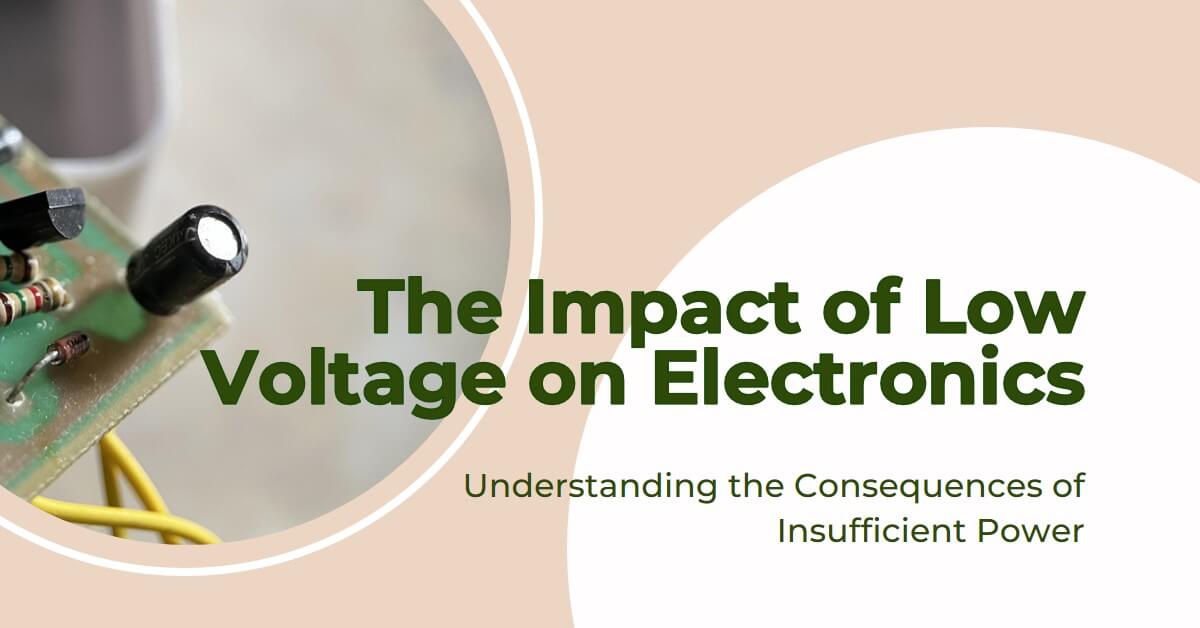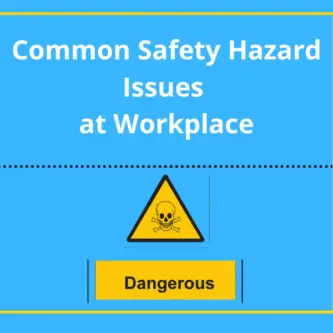Image: “Article Feature Image” by Bing is licensed under CC BY-NC-SA 4.0. Source: Bing Graphic Art. License: CC BY-NC-SA 4.0.
In today’s technologically driven world, electronic devices have become an integral part of our lives. From smartphones to home appliances, these devices rely on a stable and appropriate power supply to function optimally.
One crucial factor that can affect their performance is voltage drop. Can low voltage damage electronics? As a short answer, Yes, the voltage drop can potentially damage electronics that rely on a stable power supply.
In this article, we will explore the effects of voltage drop on electronics, the risks it poses, and preventive measures to safeguard our devices.
Understanding Voltage Drop
Voltage drop refers to the reduction in voltage that occurs when electrical current flows through a conductor or circuit.
It is caused by factors such as the resistance of the conductor and the distance between the power source and the device.
While voltage drop is a common phenomenon, excessive or prolonged voltage drop can have detrimental effects on electronic devices.
Importance of Operating Voltage Range
Electronic devices are designed to operate within specific voltage ranges specified by the manufacturers.
Deviating from this recommended range can lead to various issues. It is essential to understand the significance of operating within the specified voltage range to ensure the longevity and optimal performance of our devices.
Read my comprehensive article: Can a 220v Fan Motor Run on 110v? Exploring the Possibilities
Impact of Low Voltage on Electronics
Low voltage or voltage drops below the specified range can have several adverse effects on electronics. Let’s explore some of these effects:
a. Reduced Performance: When electronic devices receive insufficient voltage, their functionality can be compromised. They may not operate at their full potential, resulting in slower processing speeds, decreased efficiency, or limitations in capabilities.
b. Malfunctions and Erratic Behavior: Inadequate power supply can cause devices to behave unpredictably. Symptoms may include intermittent issues, random shutdowns, or display flickering. These malfunctions can disrupt the user experience and affect the device’s overall reliability.
c. Startup Problems: Low voltage can hinder the device’s ability to power on or cause difficulties in initiating the startup process. Users may experience delays, failed attempts, or the device refusing to start altogether.
d. Potential Component Damage: In extreme cases, a significant voltage drop can lead to irreversible damage to sensitive electronic components within the device. This damage can result in permanent failure and render the device inoperable.
Read also my article: Don’t Let Voltage Drops Damage Your Microwave.
Factors Contributing to Voltage Drop
Several factors can contribute to voltage drop, including:
a. Distance: The longer the distance between the power source and the device, the higher the chances of voltage drop occurring. This is especially relevant in scenarios such as wiring across large areas or when devices are located far from the power source.
b. Resistance: Inadequate or outdated wiring, loose connections, or undersized conductors can increase resistance and contribute to voltage drop. These issues can arise due to poor installation, wear, and tear, or the use of substandard materials.
Preventive Measures
To mitigate the risks associated with voltage drop and protect our electronic devices, several preventive measures can be taken:
a. Proper Electrical System Design: Ensuring a well-designed electrical system that takes into account factors such as distance, wire size, and load requirements can minimize voltage drop. Professional electricians can help design and install a robust system suitable for the specific needs of the devices.
b. Stable Power Sources: Using stable power sources with consistent voltage supply can help prevent voltage drop. This can involve selecting reliable power outlets, using surge protectors, or employing voltage regulators to maintain a steady voltage level.
c. Regular Maintenance: Periodic inspections and maintenance of the electrical system can help identify and rectify issues that may contribute to voltage drop. This includes checking for loose connections, worn-out wiring, or any other signs of deterioration.
d. Load Management: Distributing the electrical load evenly across circuits can help minimize voltage drop. Avoiding overloading a single circuit and ensuring balanced power distribution can maintain voltage stability.
Impact on Different Types of Electronics
The effects of voltage drop can vary depending on the type of electronic device. Let’s explore how different devices are affected:
a. Computers and Laptops: Low voltage can cause computers and laptops to exhibit sluggish performance, longer processing times, and even system crashes. Components such as processors, hard drives, and graphics cards may not receive sufficient power, leading to reduced efficiency and potential data loss.
b. Home Appliances: Devices like refrigerators, air conditioners, and washing machines rely on stable voltage to function properly. Voltage drop can result in these appliances running less efficiently, longer cycle times, or irregular operation. In some cases, voltage drop can cause damage to the appliance’s motor or control systems. Read also: Is Voltage Drop Killing Your Refrigerator? Here’s What You Need to Know
c. Mobile Devices, TVs, and Charging Equipment: Smartphones, tablets, and other portable devices may experience slower charging times or inconsistent charging due to voltage drop. Insufficient voltage can affect battery performance and reduce the overall lifespan of the battery. Low voltage can harm your TV, chargers, and all other home electronic devices.
d. Industrial and Commercial Equipment: Industrial machinery, manufacturing equipment, and sensitive instruments are particularly vulnerable to voltage drop. Inaccurate measurements, improper functioning, or even safety hazards can arise when these devices do not receive the required voltage.
Diagnosis and Solutions
Identifying voltage drop issues and implementing appropriate solutions is crucial for maintaining the health of electronic devices. Here are some steps to consider:
a. Voltage Testing and Measurement: Utilize voltage meters or multimeters to measure the voltage at various points in the electrical circuit. This will help identify any significant voltage drop areas.
b. Rewiring and Circuit Optimization: If voltage drop is identified, consulting with a professional electrician to assess the wiring and optimize the circuit layout can help minimize voltage drop.
c. Power Conditioning Equipment: Install power conditioning devices such as voltage stabilizers or uninterruptible power supplies (UPS) to regulate the voltage and provide a stable power source to sensitive devices.
d. Professional Assistance: For complex electrical systems or persistent voltage drop issues, seeking the expertise of an electrician or technician is recommended. They can diagnose and address underlying wiring or connection problems that may be causing voltage drop.
Importance of Regular Maintenance
Regular maintenance of electrical systems is vital to ensure the prevention and early detection of voltage drop issues.
Schedule periodic inspections, address any signs of wear and tear, and keep wiring and connections in optimal condition.
Conclusion
Voltage drop can have significant consequences on electronic devices, affecting their performance, reliability, and even longevity.
Understanding the impact of voltage drop and implementing preventive measures is essential to protect our valuable electronics.
By maintaining a stable voltage supply within the recommended range, optimizing electrical systems, and seeking professional assistance when needed, we can safeguard our devices and ensure their optimal functioning for years to come.
you work With Electricity! Don’t leave empty-handed!
Looking to stay ahead of the game in the world of electrical engineering? Subscribe to my YouTube channel and gain access to exclusive content you won’t find anywhere else!
The staff I recommend (Amazon Affiliate Links to products I believe are high quality):
- Economy 120 Volt/60Hz AC Power Source – Step-Down Voltage & Frequency Converters 1800W
- UNI-T Digital Multimeter Tester UT139C
- 50-Amp Extension Cord for RV “100ft”
- Voltage Stabilizer 110/220v
- Hair Dryer “best selling“
- TOSHIBA EM131A5C-BS Countertop Microwave Ovens
Disclaimer: This contains affiliate links to Amazon products. I may earn a commission for purchases made through these links.





